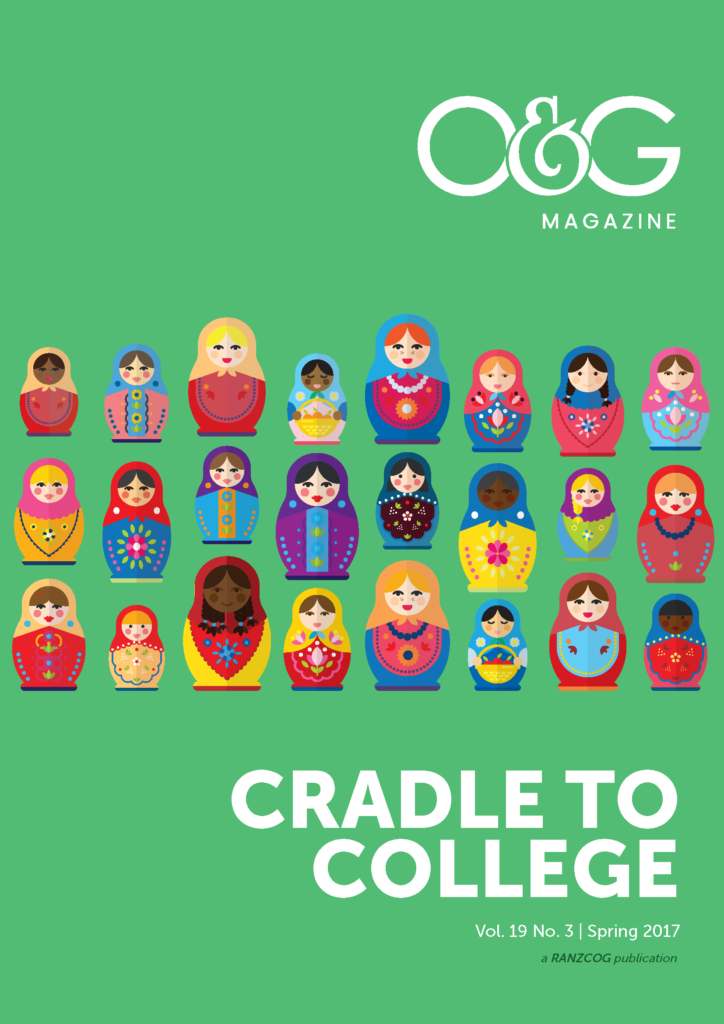One of the most rewarding aspects of being an O&G is the possibility of caring for women for extended periods of their life. This may start with seeing a young woman for contraceptive advice or pre-pregnancy counselling, caring for her during pregnancies and births, advising on gynaecological concerns, including menopause, and then seeing the baby that you helped at birth come with her mother as an adolescent with her own concerns. So we all need to have some understanding of the issues around paediatric and adolescent gynaecology.
Most of us will have little experience in the highly specialised area of paediatric gynaecology, involving congenital abnormalities, ambiguous genitalia and precocious puberty, and the articles by Asha Short, Angela Dunford and Fran Mouat provide a helpful overview of these complex topics.
Transgender issues have been very much in the news recently, in areas as diverse as education, the military, bullying and sexual harassment. Charlotte Elder’s article helps us to understand the complexities of this area, including helpful advice on the appropriate use of language when referring to transgender individuals.
The issue of vulval cosmetic surgery has also been a subject for public discussion. While most would accept that there is a healthy diversity in body shape, size and appearance, there is strong media preference for an idealised female image. This has extended to a vulval appearance that only a minority of healthy women will posess. Alexandra McRae’s article emphasises the importance of reassurance for adolescents about normal vulval anatomy and appearance.
Most gynaecologists would recognise the significant impact that primary dysmenorrhea can on have on a young woman’s life. The article by Saman Moeed and Amy Mellor points out that 90 per cent of young women with dysmenorrhea will not have any serious underlying pathology. They stress both the importance of avoiding unnecessary invasive investigation by laparoscopy and of preventing abnormal illness behaviour in young women. They quote a study that showed, of the small proportion of adolescents who underwent laparoscopy for dysmenorrhea, two thirds had no underlying pelvic pathology.
It could hardly be possible to underestimate the importance of addressing unwanted sexual activity, safe sex and unplanned pregnancy for adolescents. Data collected by the Australian Research Centre in Sex, Health and Society indicate that about 25 per cent of Year 10 students and 50 per cent of Year 12 students have had vaginal intercourse. For about 10 per cent of teenagers, their most recent sexual encounter was with someone they had met for the first time. One in four teenagers have had intercourse without using a condom. One in four teenagers have had an unwanted sexual encounter. For over 20 per cent this will be in the setting of being drunk or having used recreational drugs. In 13 per cent it will be a consequence of pressure from their partner.1 Articles by Jess McMicking and Natasha-ann Laidler address some of the issues around contraception and sexual abuse in adolescents. Rebecca Wright discusses how to approach indigenous adolescents and provides useful advice about the ‘rules of engagement’ with this group of women.
Pregnancy in adolescents, whether planned or not, has enormous consequences for young women in terms of education and their plans for the future. It raises the possibility of intergenerational disadvantage. Kirsty Lehmann discusses some of the issues of adolescent pregnancy.
Sukhwinder Sahota, Amy Jamieson and Alison Brand discuss some of the issues to do with gynaecological pathology in adolescence, both benign and malignant.
Rick Springfield said ‘Other than dying, I think puberty is about as rough as it gets’. As a caring profession, we may be able to make a small difference in this exciting, but difficult, time in our patients’ lives.






Leave a Reply